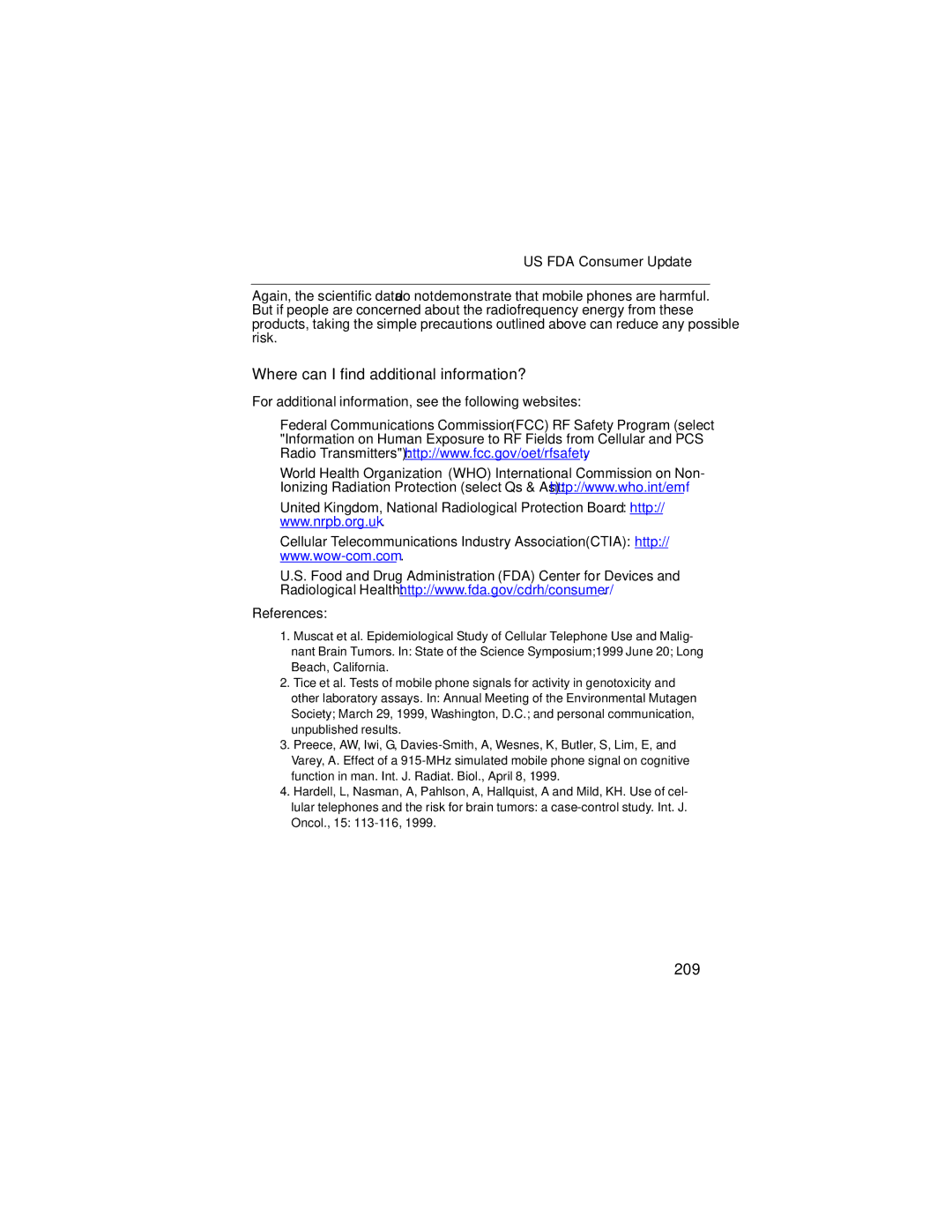US FDA Consumer Update
Again, the scientific data do not demonstrate that mobile phones are harmful. But if people are concerned about the radiofrequency energy from these products, taking the simple precautions outlined above can reduce any possible risk.
Where can I find additional information?
For additional information, see the following websites:
•Federal Communications Commission (FCC) RF Safety Program (select "Information on Human Exposure to RF Fields from Cellular and PCS Radio Transmitters"): http://www.fcc.gov/oet/rfsafety .
•World Health Organization (WHO) International Commission on Non- Ionizing Radiation Protection (select Qs & As): http://www.who.int/emf
•United Kingdom, National Radiological Protection Board: http:// www.nrpb.org.uk .
•Cellular Telecommunications Industry Association (CTIA): http://
•U.S. Food and Drug Administration (FDA) Center for Devices and Radiological Health: http://www.fda.gov/cdrh/consumer/ .
References:
1.Muscat et al. Epidemiological Study of Cellular Telephone Use and Malig- nant Brain Tumors. In: State of the Science Symposium;1999 June 20; Long Beach, California.
2.Tice et al. Tests of mobile phone signals for activity in genotoxicity and other laboratory assays. In: Annual Meeting of the Environmental Mutagen Society; March 29, 1999, Washington, D.C.; and personal communication, unpublished results.
3.Preece, AW, Iwi, G,
4.Hardell, L, Nasman, A, Pahlson, A, Hallquist, A and Mild, KH. Use of cel- lular telephones and the risk for brain tumors: a
